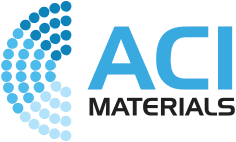
High Dispersion Technology
Cavitation
You know how your materials need to perform.We know how to get you there. Harness the power of cavitation.
Performance Optimization
Cavitation effectively disperses the solid phases of a formulation into the surrounding matrix, greatly improving the mechanical and electrical properties of the resulting material.
Engineered Cavitation
Using pressures of up to 40,000 psi, the formulation containing solid phase materials ranging from nanometers to microns in size pass through a fine orifice into an expanded reaction zone creating cavitation. The formation, growth, and implosive collapse of vacuum/vapor bubbles releases tremendous localized energy that separates particle agglomerates.
Proprietary Formulation
ACI prepares formulations of material combinations appropriate for the needs of the customer.
ACI Technology Advantages
FE3124 - Conductive Trace

Superior Conductivity
ACI’s cavitation process creates full dispersion of the conductive phases in our formulations, resulting in a robust percolative network. In other words, there are more connective pathways in a fully dispersed system leading to higher conductivity for a given volume fraction of conductive material. As the conductive phase becomes smaller, such as nano silver or graphene, agglomerates are more difficult to disperse and this effect becomes more important. Depending on primary particle size and initial distribution, we typically see an increase in conductivity between 50% and 200% when a bulk-mixed material is cavitated.

Outstanding Quality
ACI’s cavitated materials all pass through the same small orifice, enabling a much tighter distribution of particle sizes than is obtainable with bulk mixing technologies. This tighter particle distribution leads to more consistent properties within lot, between lots, and over time. In addition, the cavitation process does not change the underlying particle morphology so that the shape of the particles is more predictable. The improved distribution in particle shape complements improved dispersion and leads to more control over material performance. Lastly, the cavitation process is a closed system without the opportunity for external contamination.

Improved Rheology
The excellent dispersion created by the cavitation process enables smooth and consistent inks and pastes that behave predictably in shear as they are dispensed through a screen, stencil, or syringe. The elimination of any agglomerates in the materials enables finer line printing and more robust, clog-free application. In addition, the cavitation process does not modify particle morphology and the influence of particulate shape on rheology can thus be prescribed.

Easy to Apply
When combined with innovative formulations, the ability to uniformly disperse small solid phases into the final matrix yields materials that deposit more smoothly and uniformly. These properties makes application is faster and more consistent. This is especially true with our ESD and Thermal Barrier materials, which are not chalky, can be rolled or sprayed onto various substrates, and cure at room temperature in less than 24 hours.

Better Mechanical Performance
Improved dispersion and elimination of agglomerates obtained with cavitation eliminates the initiation sites that can cause failure at lower stress levels. This leads to more robust performance of Aerospace Coatings, Conductive Inks, and Solar Pastes as the stresses associated with thermal expansion and mechanical deformation are less likely to cause cracking, delamination, or line breaks. Improved dispersion also improves fatigue of these materials, especially for stretchable products, as the solid phase moves more easily and predictably within the polymer matrix. This mitigates the onset of damage within the material as the ink is cycled during use.


